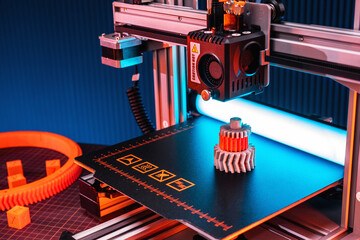Introduction
3D printing, also known as additive manufacturing, is a process of creating a physical object from a digital design. The technology has been around for several decades, but it is only in recent years that it has gained significant momentum and become widely adopted across industries. From rapid prototyping to end-part production, 3D printing is revolutionizing the way products are designed and manufactured.
In this article, we will explore the impact of 3D printing on product design and prototyping and how it is changing the manufacturing industry.

The Benefits of 3D Printing in Product Design and Prototyping
One of the biggest advantages of 3D printing is the speed and agility it offers in the design and prototyping phase of product development. Traditional prototyping methods such as injection molding or CNC machining can take weeks or even months to complete, but with 3D printing, prototypes can be produced in a matter of hours. This not only saves time but also allows designers and engineers to iterate and refine their designs quickly and easily, leading to a more efficient and effective product development process.
Another benefit of 3D printing is the flexibility it provides. 3D printers can produce a wide range of shapes and structures that would be difficult or impossible to manufacture using traditional methods. This opens up new possibilities for designers and engineers, giving them more creative freedom to explore new and innovative designs.
The Impact on Manufacturing
The rise of 3D printing is having a significant impact on the manufacturing industry. The technology is enabling companies to produce products faster and more efficiently, reducing lead times and increasing the speed of product development. This is particularly important for companies in industries such as aerospace, where the ability to quickly produce prototypes and test parts can lead to significant cost savings.
In addition to speeding up the manufacturing process, 3D printing is also helping to reduce waste and improve sustainability. The additive nature of the technology means that only the material required to produce the final product is used, reducing the amount of scrap material generated compared to traditional manufacturing methods.
Decentralized Manufacturing
One of the most exciting developments in the 3D printing industry is the concept of decentralized manufacturing. This refers to the decentralization of the production process, with products being produced closer to the end customer rather than in a centralized location. This has the potential to revolutionize the supply chain, reducing transportation costs, lead times, and carbon footprint, while also providing local communities with new employment opportunities.
Customization and Personalization
3D printing also opens up new opportunities for the customization and personalization of products. With traditional manufacturing methods, customization often requires significant investment in tooling and machinery, making it cost-prohibitive for many companies. However, with 3D printing, customization can be achieved quickly and easily, without the need for specialized equipment or tooling. This is particularly relevant for industries such as fashion and consumer goods, where personalization and customization are becoming increasingly important to consumers.
Limitations of 3D Printing
While 3D printing has many advantages, there are also some limitations to consider. One of the main limitations is the size of the objects that can be produced, as 3D printers typically have a limited build volume. In addition, the cost of 3D printers and materials can be high, making it difficult for smaller companies to invest in the technology. Finally, the quality of the final product can be limited by the resolution and accuracy of the 3D printer, although this is improving rapidly as the technology continues to evolve.
The Future of 3D Printing
Despite its limitations, the future of 3D printing is incredibly promising. Technology is rapidly improving and becoming more accessible, with new materials and applications being developed all the time. As 3D printing continues to advance, it has the potential to completely change the way products are designed and manufactured, leading to faster, more efficient, and more sustainable production processes. The decentralization of manufacturing and the ability to produce custom and personalized products could also have a significant impact on the global economy, creating new opportunities for growth and innovation. Overall, the impact of 3D printing on product design and prototyping is set to be profound and far-reaching, with technology playing a major role in shaping the manufacturing industry of the future.
Conclusion:
3D printing is revolutionizing product design and prototyping, offering speed, agility, and flexibility in the design process. The technology is having a significant impact on the manufacturing industry, reducing lead times, waste, and carbon footprint. Decentralized manufacturing and customization are also made possible by 3D printing, potentially changing the supply chain and providing new employment opportunities. Although there are limitations to consider such as size, cost, and quality, the future of 3D printing is promising with technology continuously improving and creating new opportunities for growth and innovation.


